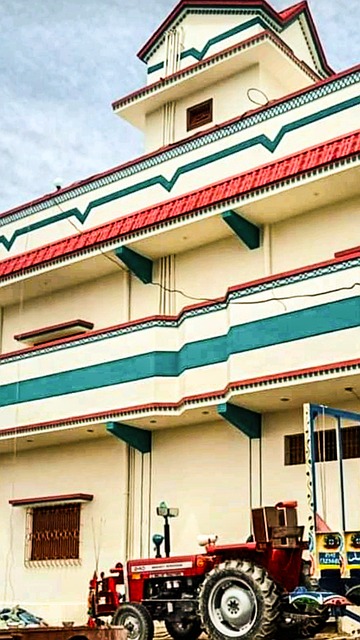On January 15 and 20, Karachi experienced significant fires in its commercial district and a residential area. Both incidents resulted in substantial property loss but no fatalities. The rapid spread of the fires highlighted the need for improved fire safety measures and stricter adherence to building codes. In response, local authorities conducted thorough assessments and enforced tighter fire prevention regulations through the Karachi Building Control Authority (KBCA). The city's fire departments are now revising building codes, promoting the use of fire-resistant materials, upgrading fire detection systems, and training personnel to enhance emergency preparedness. Additionally, community education on fire safety is being expanded to inform residents about safe practices and maintenance of electrical systems. These measures aim to significantly reduce fire risks and create a safer urban environment for Karachi's residents.
7 Latest Updates on Karachi Fire Incidents Today: Navigating the recent conflagrations in Karachi’s vibrant landscape, this article sheds light on the seven most recent fire incidents that have occurred within the city. We delve into the causes behind these blazes and their extensive impact on local businesses and residences. The response and intervention by Karachi’s authorities are scrutinized to understand the effectiveness of the measures taken during these critical situations. Moreover, we explore the preventive strategies being implemented to enhance fire safety across the city, offering insights into the future prospects for safeguarding Karachi’s rich tapestry of commerce and community. Join us as we examine the latest developments in this pressing issue.
- Latest Karachi Fire Incidents: Cause and Scale of Damage
- Response and Intervention Efforts by Local Authorities
- Preventive Measures and Future Prospects for Fire Safety in Karachi
Latest Karachi Fire Incidents: Cause and Scale of Damage

On January 15, a significant fire broke out in a commercial district of Karachi, causing extensive damage to several storefronts and businesses. The blaze, which began around noon, quickly spread due to strong winds, affecting multiple structures before it was contained hours later. Initial investigations suggested that the fire might have originated from an electrical short circuit in one of the shops. The scale of the damage was substantial, with reports indicating the loss of inventory and goods worth millions of rupees. The congested nature of the area and the presence of flammable materials exacerbated the blaze, presenting challenges for firefighters in controlling the situation promptly.
Another notable incident occurred on January 20, when a residential building caught fire, resulting in the displacement of its occupants. The cause of this fire was reported to be an unattended cooking incident that escalated rapidly. Thankfully, there were no casualties, but the extent of the damage was considerable, with at least ten apartments sustaining varying degrees of burns and smoke damage. The Karachi Fire Brigade responded swiftly, and their efforts prevented the fire from spreading further to adjacent buildings. These incidents underscore the importance of fire safety measures and the need for stringent enforcement of building codes to prevent similar occurrences in the future.
Response and Intervention Efforts by Local Authorities

On the morning of the recent fire incidents in Karachi, local authorities swiftly mobilized their resources to respond to the emergencies. The Karachi Fire Brigade, equipped with modern firefighting equipment, was dispatched to the sites immediately upon receiving distress calls. Their arrival on the scene was timely and effective, as they engaged in active fire suppression efforts, utilizing both hose reels and foam to subdue the blazes. The rapid response teams worked tirelessly to contain the flames and prevent them from spreading to adjacent structures. Alongside the firefighting operations, medical units were also deployed to provide immediate aid to any injured individuals, ensuring the safety of those affected by the fires.
Furthermore, in the aftermath of these incidents, local authorities took proactive measures to assess and rectify any lapses in the fire safety infrastructure. Inspections were conducted at various locations across the city to ensure compliance with fire safety regulations. The Karachi Building Control Authority (KBCA) played a crucial role in this regard, reviewing building plans and enforcing stricter measures for fire prevention and preparedness. This proactive approach not only aimed to minimize future fire risks but also underscored the commitment of local authorities to safeguard life and property within the city’s ever-expanding urban landscape.
Preventive Measures and Future Prospects for Fire Safety in Karachi

In the wake of recent fire incidents in Karachi, stakeholders are intensifying efforts to implement preventive measures aimed at mitigating such occurrences. The local authorities and fire departments are collaborating to enhance building codes, mandating fire safety assessments for existing structures and incorporating these standards into new developments. Fire-resistant materials are being advocated for in construction practices, and there is a push for improved fire detection systems across the city. Regular training for firefighters, including both personnel and equipment, is also underway to ensure they are well-equipped to handle emergencies effectively. Community awareness campaigns are being launched to educate residents on fire safety protocols, emphasizing the importance of clear escape routes and proper maintenance of electrical systems.
Looking ahead, Karachi’s future prospects for fire safety are optimistic, provided these measures are consistently upheld and built upon. The adoption of advanced technology in fire prevention and response, such as automated sprinkler systems and heat and smoke detection devices, will further bolster safety standards. Continued investment in the training of both professionals and the public is crucial to foster a culture of preparedness and vigilance. With a commitment to these updates and ongoing diligence from all sectors of society, Karachi can expect to see a marked reduction in fire-related incidents, ensuring a safer environment for its inhabitants.
In conclusion, the recent fire incidents in Karachi have underscored the need for improved fire safety measures and swifter emergency response systems. The latest updates highlight a combination of causes leading to these events, with local authorities demonstrating proactive intervention efforts. Moving forward, it is imperative that preventive measures are not only implemented but also continually evaluated and enhanced. The future of fire safety in Karachi hinges on the collective action of all stakeholders, ensuring that the city’s inhabitants can reside in a safer environment.

